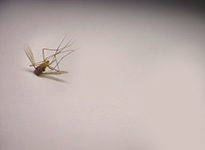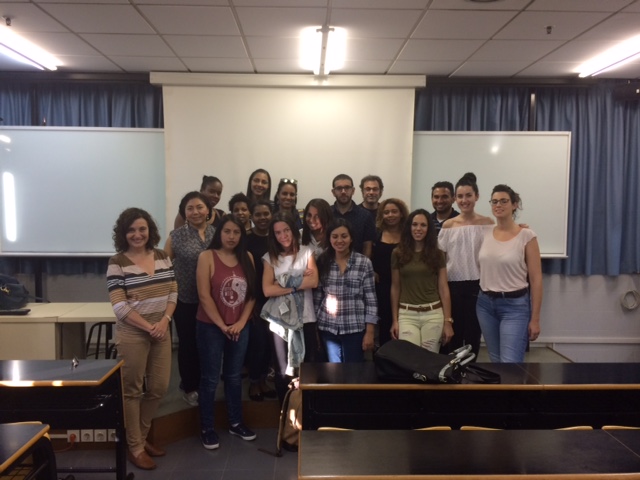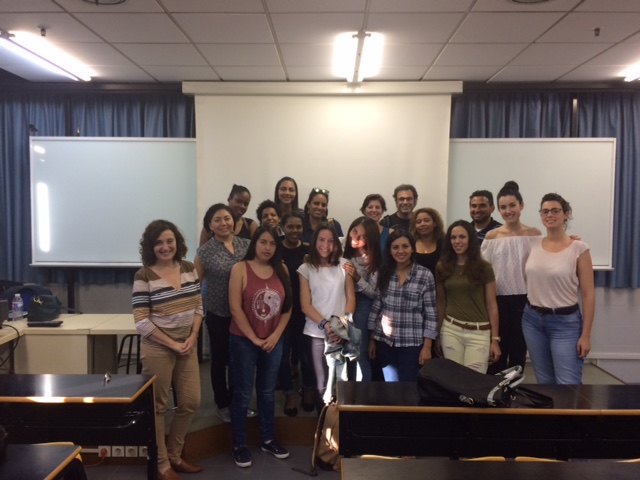
The World Health Organisation (WHO) has announced that Zika infection is already an international public health emergency. In its site, it lays out and answers 14 questions on the virus. With this post, we aim at giving you all the information you need.
3 february 2016
1. Where is the Zika virus present?
2. How is the Zika virus transmitted?
Through the bite of a mosquito which is infected with the Aedes genre; it is the same mosquito as the one which transmits the Dengue, Chikungunya and the yellow fever.
3. How does the Aedes genre reproduce?
This mosquito females, the ones who bite, feed themselves intermittently and bite more than one person. Once sated, the female needs to rest during three days before laying eggs, which can survive without water up to a year. In the presence of water, the eggs develop into larvae and, finally, into adult mosquitos. Mosquitos are infected when they bite a host of the virus.
4. Where can the Aedes genre mosquito survive?
In most cases, the virus extends in tropical and subtropical areas through the Aedes Aegypti mosquito, which does not survive in cooler climates. The virus also transmits thorugh the Aedes Albopictus mosquito, which can hibernate and survive in regions with cooler temperatures.
5. Can the Aedes genre mosquitoes move from one country to another and from one region to another?
They are not great flyers, as they cannot go over 400 meters; however, they can be accidentally transported by humans from one place to another. For example, in the trunk of a car or through plants. If it survives to the destination’s climate, the mosquito can, theoretically, reproduce there and introduce the Zika virus.
6. Which are the symptoms of a disease provoked by the Zika virus?
7. What are the possible complications of the Zika virus?
There is very little known about the disease’s complications due to the fact that there are no registers of important sprouts provoked by the Zika before 2007.
In 2013-2014, during the first sprout of the disease of Zika in the French Polynesia -which also coincided with a sprout of Dengue- the national health authorities notified an unusual rise in the Guillain-Barré Syndrome. In 2015, within the context of the Zika-based disease’s first sprout in Brazil, there was also a rise in the same syndrome. Retrospective pieces of research are still going on for this effect.
The Guillain-Barré Syndrom is an illness in which the organism’s immune system attacks part of the nervous system. It may be due to several viruses and can affect people of all ages. The main symptoms are muscular weakness and chills in arms and legs, but the exact triggering syndrome remains unknown. Serious complications may be found if the respiratory muscles are affected, which would need hospitalisation. Most people affected by the Guillain-Barré syndrome are able to get better, although some of them may keep on experimenting weakness.
In 2015, Brazil’s local health authorities also observed a rise in the number of new-borns with microcephaly, coinciding with the sprout of the Zika virus. The authorities and health organisms research a possible connection between microcephaly and the virus, added to other possible causes. However, in order to better understand the possible link, it is necessary to carry out more pieces of research.
8. Should pregnant women worry about Zika?
9. How is the Zika virus disease treated?
10. How is the Zika virus disease diagnosed?
The diagnosis can be confimed in labs through a blood analysis and, in most cases, are based in the symptoms of the sick and their recent history. For example, if they have been bitten by mosquitoes or have travelled to an area where the Zika virus is known to be present.
11. What can I do to be protected?
The best protection against the Zika virus is to avoid mosquito bited which also protects against other diseases transmitted by mosquitoes such as the Dengue, Chikungunya or the yellow fever.
To avoid the bites it is useful to use mosquito repellent, wearing clothes which cover most parts of the body- preferably in light colours-; using physical barriers such as protecting screens, keeping doors and windows closed and sleeping with mosquito nets.
It is also important to empty, clean and cover containers which could accumulate water such as cubes, pots or wheels in order to eliminate possible breeders.
12. Is it advisable not to travel to areas affected by the Zika virus?
13. What is still unknown about the Zika virus?
In order to understand this illness better, is important to take the following into account:
The epidemiological characteristics of the virus, as for example the incubation period, the mosquito’s function in the transmission of the virus and its geographical propagation.
Possible medical contra-measures can be applied, such as treatments and vaccinations.
Interaction of the Zika virus with other arbovirus (virus transmitted by mosquitos, ticks and other arthropods), such as the Dengue virus.
The development of laboratory diagnosis tests which are specific for the Zika virus and which can reduce the erroneous diagnosis due to the presence of the dengue virus or other ones which are present in the trial samples.
14. What are the measurements being taken on by the WHO?
The World Health Organization collaborates with countries in order to:
Define the research on the Zika virus disease and give them priority by calling out for experts and associates.
Promoting the surveillance of the Zika virus and its possible complications.
Strengthening the ability to communicate the risks to help countries meet the compromises acquired by the International Health Regulations.
Supplying training on clinical management, diagnosis and vector control specifically through some of WHO’s collaborators.
Strengthening the ability to detect the virus in the lab.
Helping the health authorities to apply control strategies of the vectors aiming at reducing the Aedes mosquito populations by, for example, offering larvicides for the treatment of brackish water which cannot be cleaned, emptied or covered.
Developing recommendations for clinical assessment and follow-up of the people infected with the Zika virus in collaboration with experts and other health organisms.
Published by: Paula Tomás Gimeno











